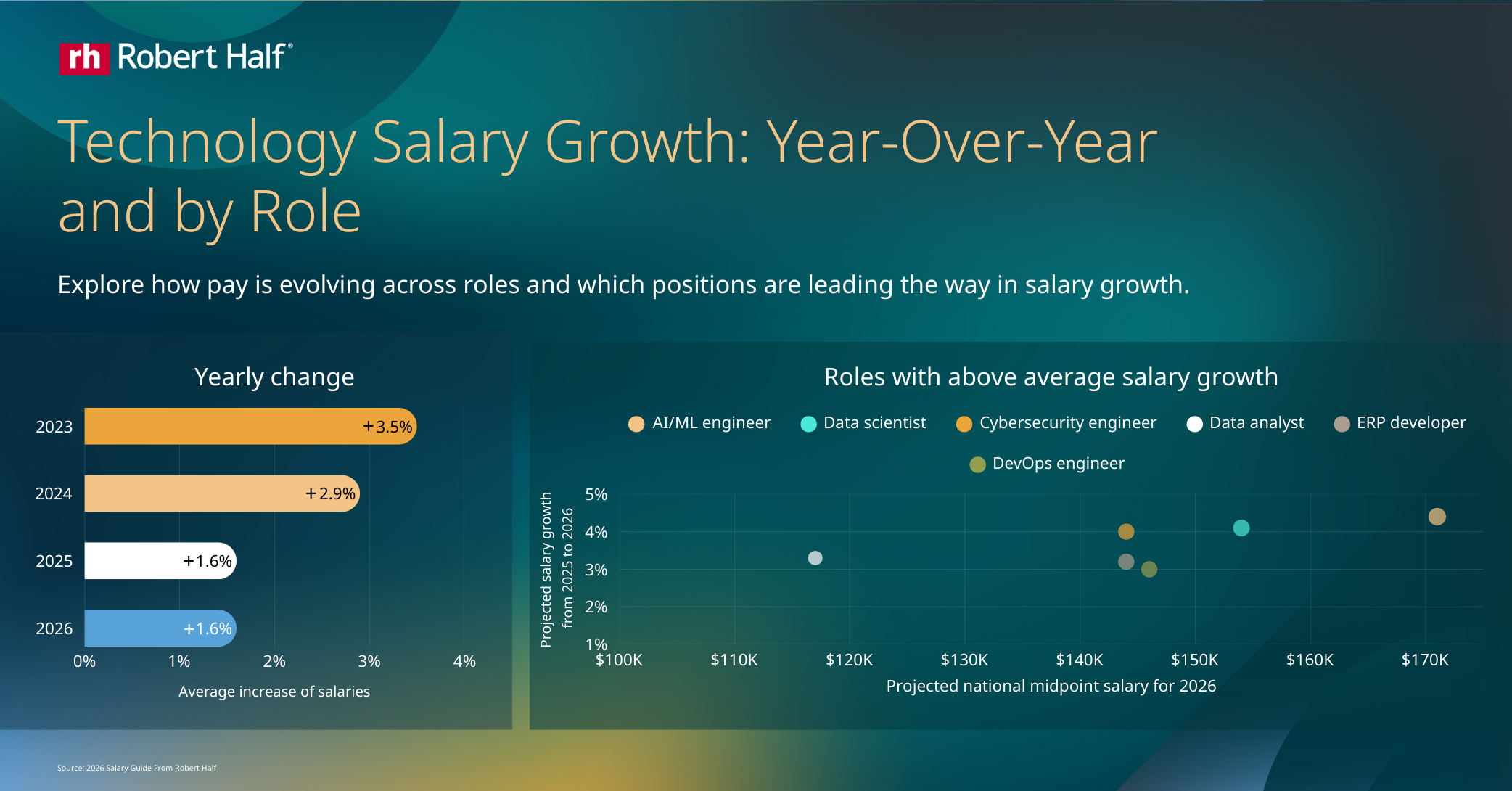Industries paying more for tech skills
Technology is the backbone of nearly every sector, yet some industries are moving fastest to secure top talent:
Financial services—Increasing reliance on AI-driven analytics, fintech solutions and cybersecurity.
Healthcare—Rising need for cloud infrastructure and data protection.
Professional services—Expanding automation and ERP systems to improve efficiency.
Employers in these sectors are competing aggressively for professionals with the right mix of technical and business skills.
Opportunities ahead in technology
Technology in 2026 is focused on sustainable progress, not short-term trends. Employers are refining compensation strategies, investing in upskilling and embracing flexible talent models. For professionals, expanding technical and business skills opens the door to higher pay and long-term growth.
While salary increases are moderate, opportunity is strong for those ready to shape what’s next. In an industry defined by transformation, success comes from the people who know how to turn technology into progress.









